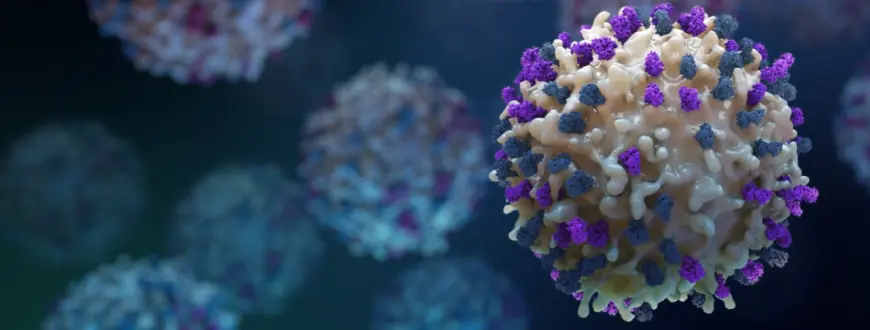Transforming Oncology: Therapeutic and Diagnostic Trends Ahead

The global oncology market is at the forefront of medical innovation, evolving rapidly to meet the growing burden of cancer worldwide. Oncology, the branch of medicine dedicated to cancer prevention, diagnosis, and treatment, encompasses a wide array of therapeutic approaches—including surgery, radiation, chemotherapy, targeted therapies, immunotherapies, and emerging cell and gene therapies.
Driven by increasing cancer incidence, rising healthcare expenditures, technological advances, and the shift toward personalized medicine, the oncology market is one of the largest and fastest-growing segments of the global healthcare industry. Enhanced screening methods, expanding clinical pipelines, and greater patient awareness are fueling demand for early detection and more effective, less toxic treatments.
Market Overview
Cancer remains a leading cause of mortality worldwide, affecting millions across all age groups and geographies. The oncology market includes a wide range of products and services across diagnostics, pharmaceuticals, medical devices, and supportive care. Pharmaceutical oncology—covering cytotoxic agents, targeted therapies, hormonal treatments, and immunotherapies—represents the largest revenue-generating segment.
Ongoing innovation in genomics, biomarker development, radiotherapy, AI-driven diagnostics, and minimally invasive surgery is revolutionizing oncology care. The rise of value-based healthcare and payer pressure for cost-effective solutions is also shifting focus toward biosimilars, generics, and efficient delivery models.
Despite rising costs and regulatory challenges, the oncology market continues to expand, driven by an urgent global need for better prevention, detection, and treatment.
Click here to download a sample report
Key Market Drivers
- Rising Global Cancer Incidence
Increased exposure to risk factors, aging populations, and lifestyle changes are contributing to a steady rise in cancer cases worldwide. - Advancements in Targeted and Immunotherapies
Precision medicine is enabling more effective, less harmful treatments through biomarker-specific drugs and immune-based approaches. - Improved Diagnostics and Screening Technologies
Early detection via imaging, liquid biopsies, and genomic profiling is increasing treatment success rates and survival outcomes. - Strong Clinical Pipeline and R&D Investment
Thousands of oncology drugs and devices are in various stages of development, with oncology receiving the largest share of pharma R&D budgets. - Supportive Government and Regulatory Policies
Accelerated approval pathways, orphan drug status, and national cancer control programs are aiding innovation and access.
Market Segmentation
By Cancer Type:
- Breast Cancer
Leading cancer among women globally, with multiple therapeutic modalities and robust screening programs. - Lung Cancer
High mortality rates and increasing incidence in both smokers and non-smokers driving targeted drug development. - Colorectal Cancer
Rising in both developed and emerging regions due to diet and lifestyle changes. - Prostate Cancer
One of the most common cancers in men, with hormonal and targeted therapies expanding treatment options. - Blood Cancers (Leukemia, Lymphoma, Myeloma)
Strong demand for CAR-T therapy, stem cell transplantation, and immunotherapies. - Others
Includes ovarian, cervical, liver, pancreatic, and skin cancers.
By Therapy Type:
- Chemotherapy
Still widely used, often in combination with other therapies. - Targeted Therapy
Focuses on specific genetic mutations or molecular targets in cancer cells. - Immunotherapy
Includes checkpoint inhibitors, cancer vaccines, and cell-based therapies. - Hormonal Therapy
Common in hormone-sensitive cancers such as breast and prostate. - Radiotherapy and Radiosurgery
Advancing with techniques like stereotactic radiosurgery (SRS) and image-guided radiotherapy (IGRT). - Surgical Oncology
Remains crucial, especially with minimally invasive and robotic techniques. - Supportive Care and Palliative Oncology
Focused on symptom management, quality of life, and survivorship.
Regional Insights
North America
The largest oncology market, driven by high cancer prevalence, advanced healthcare infrastructure, rapid adoption of novel therapies, and strong clinical research. The U.S. leads in innovation and early product launches.
Europe
Strong market presence, supported by favorable reimbursement, universal healthcare systems, and emphasis on early detection. Germany, the U.K., and France are leading contributors.
Asia-Pacific
Fastest-growing region, with China, India, and Japan at the forefront. Factors include large patient populations, increased awareness, and government investment in cancer care infrastructure.
Latin America
Growing demand for oncology services and therapies in Brazil, Mexico, and Argentina. Challenges remain in access and affordability.
Middle East & Africa
Improving cancer diagnosis and treatment access through public-private partnerships and global health initiatives.
Competitive Landscape
The oncology market features a mix of global pharmaceutical giants, biotech innovators, diagnostic companies, and medical device manufacturers. Intense competition exists in all segments, particularly in targeted and immunotherapies.
Key Competitive Strategies:
- Mergers and Acquisitions
Consolidation among players to expand pipelines and geographic reach. - Investment in Precision Oncology
Development of companion diagnostics and biomarker-based therapies. - Collaborations with Academic and Research Institutions
Accelerating innovation and clinical development. - Biosimilar and Generic Development
Focused on cost-effective alternatives to blockbuster biologics. - Patient-Centric Models
Emphasis on outcome-driven approaches and holistic care pathways.
Technological & Product Trends
- Next-Generation Sequencing (NGS)
Enabling personalized treatment decisions based on tumor genomic profiles. - CAR-T and Cell-Based Therapies
Breakthrough treatments for hematological cancers, now being expanded to solid tumors. - Artificial Intelligence and Digital Pathology
AI is enhancing diagnostic accuracy, treatment planning, and trial recruitment. - Liquid Biopsies
Non-invasive blood tests for early detection, recurrence monitoring, and real-time mutation tracking. - 3D Printing and Robotic Surgery
Increasing precision in tumor resection and reconstruction. - Radiopharmaceuticals and Theranostics
Combining imaging and treatment for targeted delivery of radioactive agents.
Challenges and Restraints
- High Cost of Cancer Therapies
Novel treatments can be prohibitively expensive, limiting access in many regions. - Drug Resistance and Recurrence
Cancer cells can evolve resistance to therapies, necessitating ongoing innovation. - Regulatory and Reimbursement Barriers
Delays in approvals and complex pricing negotiations affect market penetration. - Limited Access in Low-Income Countries
Infrastructure and resource limitations restrict adoption of advanced oncology care. - Emotional and Financial Burden on Patients
Comprehensive cancer care remains physically, emotionally, and financially taxing for many.
Future Outlook (2024–2032)
The oncology market is expected to grow robustly through 2032 due to:
- Continued pipeline expansion and faster approvals
- Integration of AI, genomics, and digital health in treatment planning
- Greater adoption of immuno-oncology and combination therapies
- Expansion of cancer screening and early detection programs
- Wider access to biosimilars and generics in emerging markets
- Growth of outpatient and home-based cancer care models
As cancer care evolves, the market will shift further toward personalized, value-based, and integrated solutions aimed at improving survival rates and patient experience.
Conclusion
The global oncology market is a dynamic and rapidly evolving ecosystem responding to one of the greatest global health challenges of our time. With increasing disease burden, relentless innovation, and growing public and private investment, the industry is poised for transformational growth.
What's Your Reaction?
 Like
0
Like
0
 Dislike
0
Dislike
0
 Love
0
Love
0
 Funny
0
Funny
0
 Angry
0
Angry
0
 Sad
0
Sad
0
 Wow
0
Wow
0















































